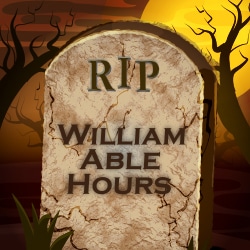Last month, I participated on a panel at the 2016 Futures Conference. My assigned task was to discuss whether the billable hour would finally be dead by 2026. That got me thinking about the future event that would mark the passing of the billable hour as we know it:
Would there be a final hourly invoice, billed and paid by a client, signifying the system’s demise?
Would there be a funeral for the billable hour? And if so, who would be there to eulogize it and what would that sound like?
The eulogy might sound something like this:
We are gathered here today to honor and pay our respects to William “Able” Hour, or “Bill” as many of us came to know him. Bill Hour had a long career, providing many with joy and others with hand-wringing over the intended and unintended negative consequences he created.
Bill would regularly and effortlessly put the client’s interests in conflict with those of lawyers.
He was very adept at hiding the true cost of a project and shunned providing clients with any level of predictability.
Bill Hour would take great pride in promoting redundancy and over-lawyering.
His knack for having clients pick up the tab for process inefficiencies, bill padding and training was unmatched.
I recall a time when Bill and I were returning from a client’s office. We had just landed a very important project, and I asked Bill if we should develop a budget, project plan or timeline that would identify key milestones. Bill assured me, with a wink and a smile, there was no need as he “had it covered.”
Alas, the Death of the Billable Hour Is Not to Be
I believe the billable hour will still be alive in 2026. How so?
A few drivers are keeping the billable hour alive, including:
- An unwillingness by some law firms (or partners within firms) to offer pricing alternatives.
- A law firm dependence on billable hour targets.
- Cost accounting that typically drives law firm profitability calculations.
- Clients that are still more comfortable with billable hour arrangements.
- Clients addicted to the billable hour data they mine internally or receive from their e-billing vendors, allowing for simple quantitative comparisons.
- Sophisticated or complex legal work that warrants an hourly billing arrangement.
But there are some changes we should see over the next 10 years:
- An increase in legal services and products as subscriptions.
- Less emphasis on billable hour targets at firms.
- Law firm business models that don’t rely on the billable hour to calculate profitability.
- A growing number of clients that favor outcome or value-based metrics and rely less on some quantitative metrics, like hourly billing rates.
Note: Characteristics of the billable hour are drawn from the ABA Commission on Billable Hours Report, 2001-2002.
More of “What Will Law Look Like in 2026?”
The theme of the College of Law Practice Management’s 2016 Futures Conference, “What Will Law Look Like in 2026?,” brought out some deeply interesting ideas. Attorney at Work asked conference speakers and attendees to share highlights in these posts:
- The Future of Client Service by Nathaniel Slavin (The Wicker Park Group)
- Will Alternative Business Structures Fly? by Reid Trautz (American Immigration Lawyers Association)
- Where Will the Legal Jobs Be in 2026? by Jordan Furlong (Law21)
- Will Our Data Be Any Safer in 2026? by Sharon Nelson (Sensei Enterprises)
- Five Things Overheard at the 2016 Futures Conference
Illustration ©iStockPhoto.com




















